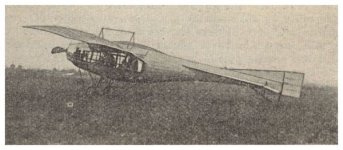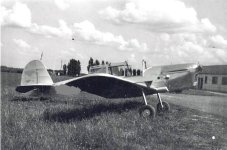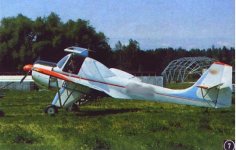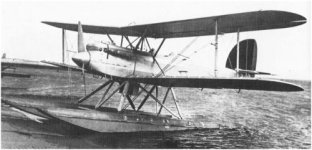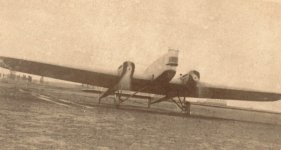-
There seems to be an uptick in Political comments in recent months. Those of us who are long time members of the site know that Political and Religious content has been banned for years. Nothing has changed. Please leave all political and religious comments out of the forums.
If you recently joined the forums you were not presented with this restriction in the terms of service. This was due to a conversion error when we went from vBulletin to Xenforo. We have updated our terms of service to reflect these corrections.
Please note any post refering to a politician will be considered political even if it is intended to be humor. Our experience is these topics have a way of dividing the forums and causing deep resentment among members. It is a poison to the community. We appreciate compliance with the rules.
The Staff of SOH
You should upgrade or use an alternative browser.
The Ongoing Mystery Aircraft Thread Part Deux.
- Thread starter Ferry_vO
- Start date
fabulousfour
Members +
fabulousfour
Members +
pomme homme
Members +
fabulousfour
Members +
Santé
pomme homme
Members +
pomme homme
Members +
pomme homme
Members +
pomme homme
Members +
cthornburg
Members +
giruXX
Members +
Here is a machine translation of: http://авиару.рф/aviamuseum/aviatsi...levoennyj-period/legkij-samolet-aushra-zarya/
"Aušra" ("Dawn") by V. Kensgaila (Panevėžys, Lithuanian SSR) is the largest amateur aircraft in the country.
Light agricultural aircraft "Aushra" (Zarya).
Developer: V. Känsgail.
Country: USSR
The first flight: 1989.
"Aushra" is the largest amateur aircraft created in the Soviet Union. Its maximum takeoff weight was 2,200 kg with a target load of 800 kg, which was a record for lifting capacity. This "goliath" of homemade aviation was created almost single-handedly by a pilot from Riga, Vladas Känsgail, under contract with the collective farm "Aushra" ("Dawn") to perform air-chemical work in agriculture.
Of course, the main advantage of the machine is not in its size and weight, but in the fact that it is designed to perform aerial chemical works in agriculture, for which it is equipped with a large tank for liquid chemicals and special equipment for spraying them.
The fuselage of the aircraft is made entirely of plastic, the cabin is located in front of the fiberglass chemical tank, which is in the center of gravity of the machine. Elevated position of the pilot's seat provides excellent visibility, in the cockpit next to the pilot overflights can take a seat mechanic. Sufficiently high power-to-weight ratio and relatively low wing unit load provide the "Aushra" with excellent maneuverability, short takeoff and run-down, so necessary on sites of limited size.
Having thoroughly assessed the flight data and design of the machine, the flight engineer and the test pilots of the SLA-89 flight, nominated the author of the plane for the first prize of the Ministry of Aircraft Industry of the USSR - 10 thousand roubles.
It seems that "Aushra" with an economical serial engine M-14P can become a prototype of a successful agricultural aircraft and a good hint for professional aircraft constructors. Moreover, among the technical features of the "Aushra", which contributed to its rapid construction and relatively low cost, the achievement of the best flight characteristics and high reliability, should be included the wing with fixed winglets and slotted flaps from the Yak-12R aircraft and the horizontal tail from the same machine. And the power plant, landing gear and systems are similar to the Yak-52.
Translated with www.DeepL.com/Translator (free version)
cthornburg
Members +
Chris
fabulousfour
Members +

fabulousfour
Members +
lefty
SOH-CM-2023
Well I do have the full story on Robert's twin-boomer. It's the first prototype - F-AKCA - of the SPCA III. (the second prototype had wing fillets on the trailing edge). Mike (Pommehomme) kindly obtained for me a copy of Yves Laget's excellent SPCA book, and my French is just about good enough....


